
CIS Improvements
Porsche 911 CIS has a few key weaknesses that I believe can be addressed easily to result in a significantly more robust fuel system.
On any given day, browse the Pelican Parts Forums and guaranteed you will find at least one or two active threads on CIS issues. It is easy to see why people generally think CIS sucks. Lets discuss its common weaknesses and what I plan on doing about them on my car.
Known CIS Weaknesses
After reading through countless CIS forum discussions, including this very informative CIS Troubleshooting for Dummies thread, I learned about the most common problems people encounter:
- Starting and Running Issues caused by:
- Vacuum leaks (unmetered air)
- Fuel delivery problems (injector, pump, or accumulator)
- Fuel pressure problems (out of spec system, control, and residual pressures)
- Emissions issues (mixture too rich or too lean)
- Electrical component failures (Lambda ECU, OXS relay, O2 sensor, temp switches)
- Plastic Intake Airbox issues caused by:
- Intake backfire blowing the box open (creating a giant vacuum leak)
- Screws inside the airbox coming loose and getting sucked into cylinders
The issues listed under #1 cause running issues but are not catastrophic in and of themselves. The issues listed under #2 are catastrophic failures that at a minimum will require a tow and an airbox repair or worst case could result in major engine damage.
While I intend to rebuild the entire system and tune it per the service manuals to rule out all the issues under #1, my focus here will be on preventing everything in #2 from occurring.
Airbox Backfire
A common symptom of CIS cars that are not running correctly is that they can experience an intake backfire in the airbox. This can happen anytime but is especially common during cold starting.
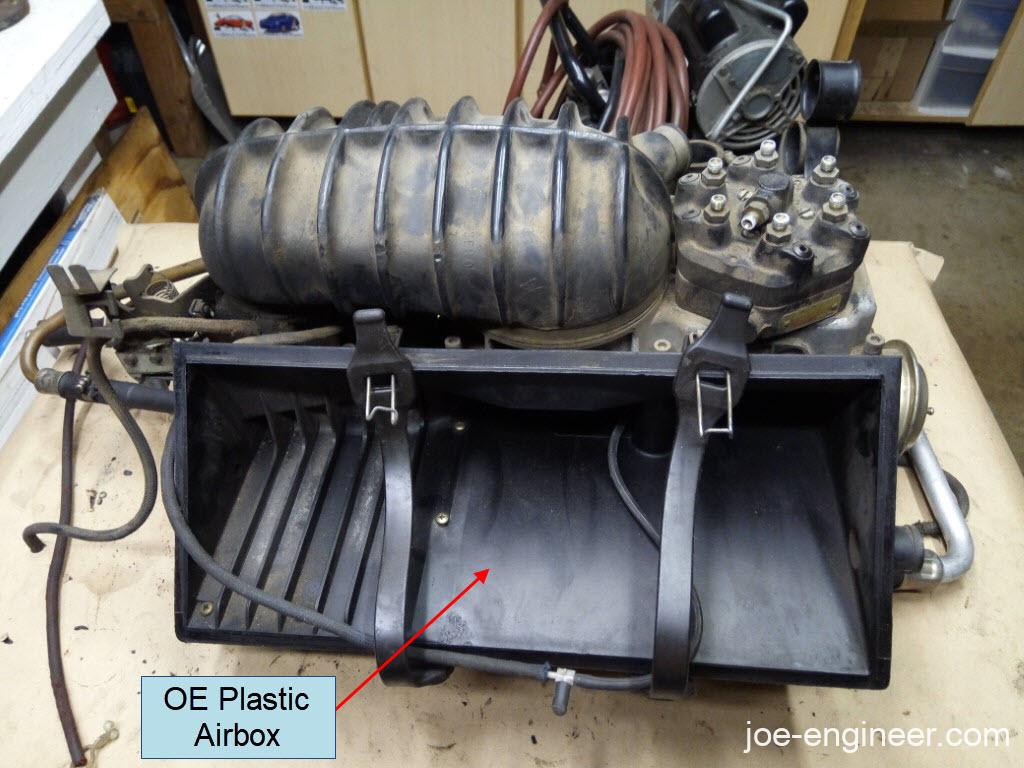
Backfires tend to be related to a lean fuel mixture, so elimination of vacuum leaks is crucial. Another suspected culprit in early CIS cars was accumulation of fuel vapors in the airbox main chamber during cold starting suddenly igniting. All CIS cars have an extra fuel injector (called a cold start valve) that sprays extra fuel into the airbox during cold engine starts. In the early cars the cold start valve sprayed directly into the airbox so fuel vapors could accumulate in the main chamber and potentially build up. The factory countermeasure for this issue was a cold start manifold over the cold start valve nozzle to transport fuel vapors directly to the opening of each intake runner.
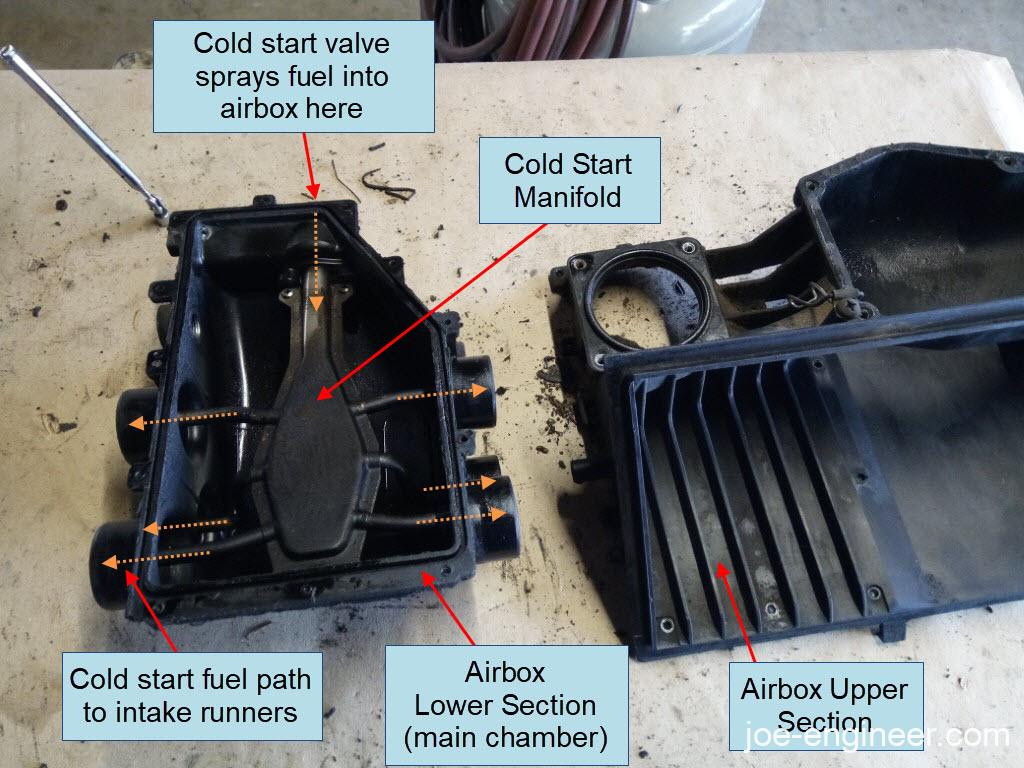
1980 and later SCs started carrying the airboxes equipped with the cold start manifold, and all new Genuine Porsche replacement airboxes have the manifold regardless of the year. This feature does not eliminate backfires but does greatly reduce their chance of occuring.
Blown Airbox
When a backfire occurs, usually the pressure wave splits the airbox at the seam where the upper and lower sections are screwed together, resulting in a giant vacuum leak that prevents the engine from starting.
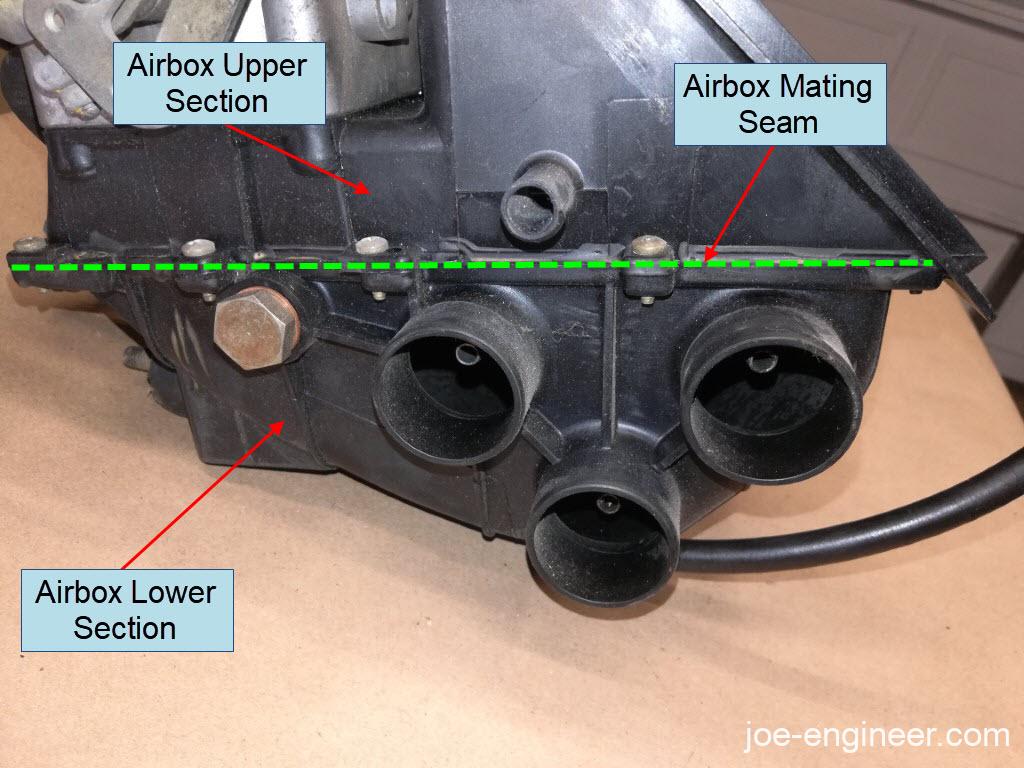
Usually the screw threads will strip out on the lower section separating the two and/or the tongue-and-groove joint between the two sections will break somewhere.
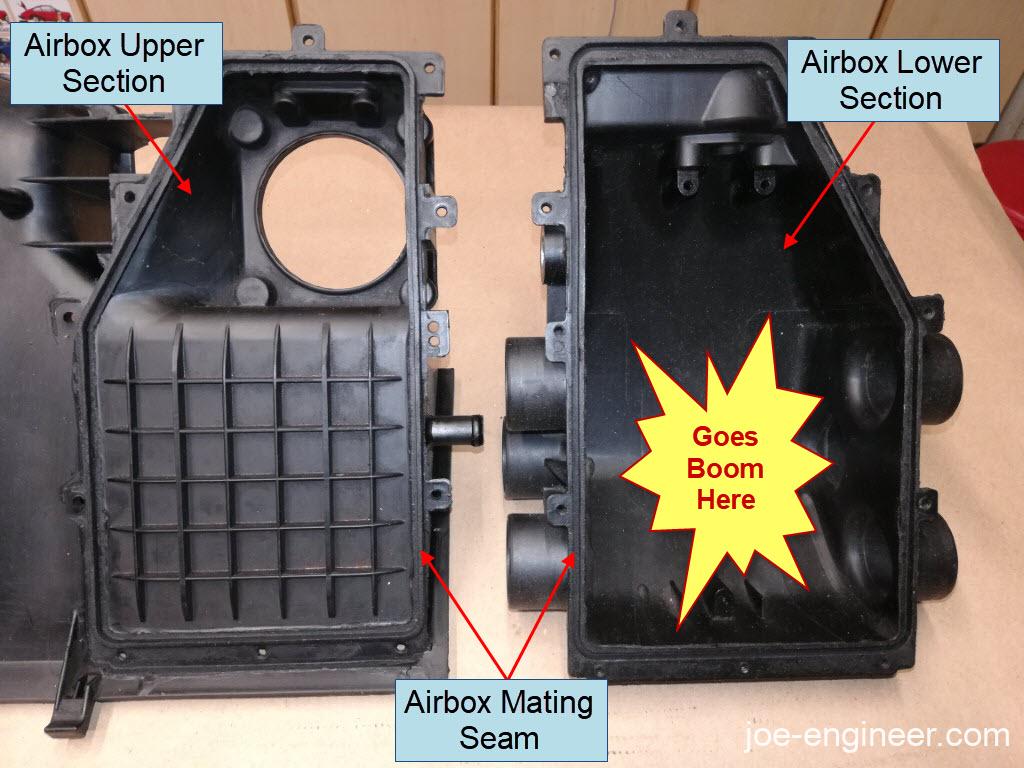
Backfires are not a Porsche-exclusive problem. However the Porsche 911 CIS seems to be the only one where a backfire causes the plastic intake airbox to blow up and disable the car. In fact, my very own 911 experienced a blown airbox a few months after I bought it, one cool morning in 2015.
When these cars were still fairly new, the aftermarket responded to these airbox issues with metal airboxes that were resistant to backfires. There are several versions of aftermarket metal CIS airboxes. Some are welded out of stainless steel sheet, such as this version by Webbs Machine Design:
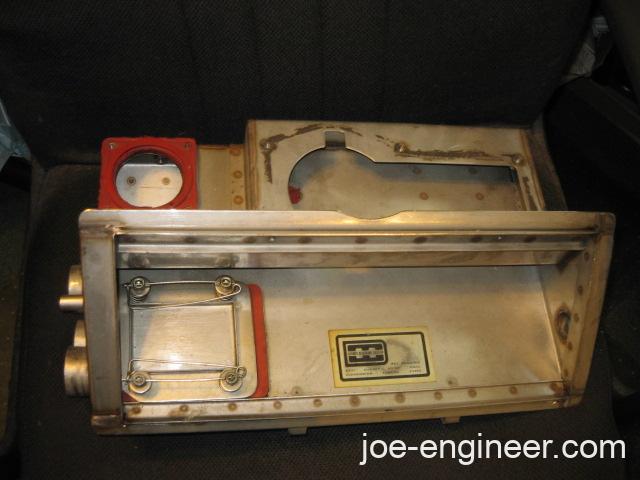
Photo: Pelican Parts Forums 
Photo: Pelican Parts Forums
Some were made cast out of aluminum, such as this one:

Photo: Pelican Parts Forums 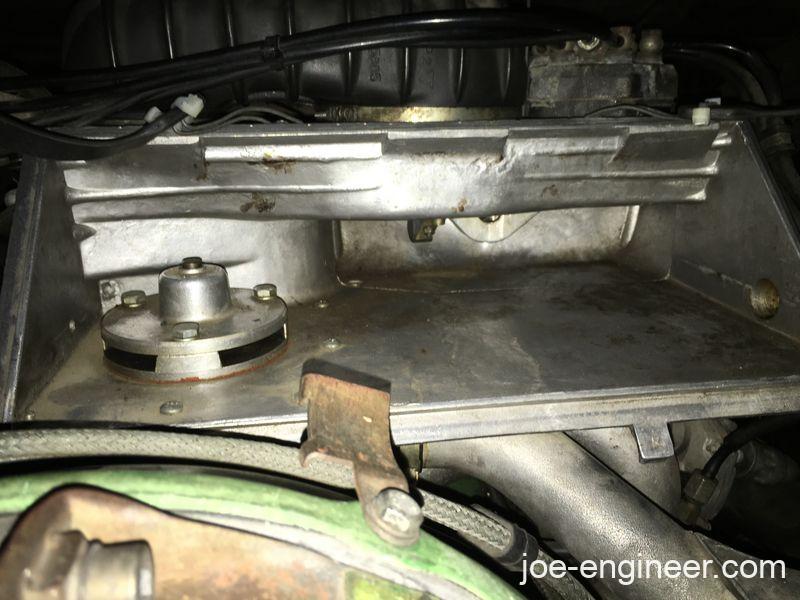
Photo: Pelican Parts Forums
And some bespoke one-off CNC-machined aluminum versions exist such as this one:
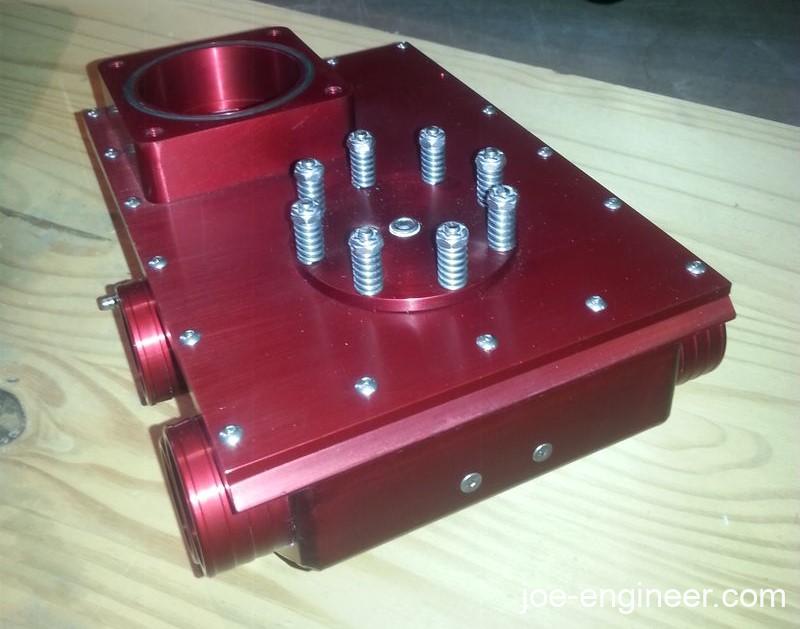
Photo: Pelican Parts Forums 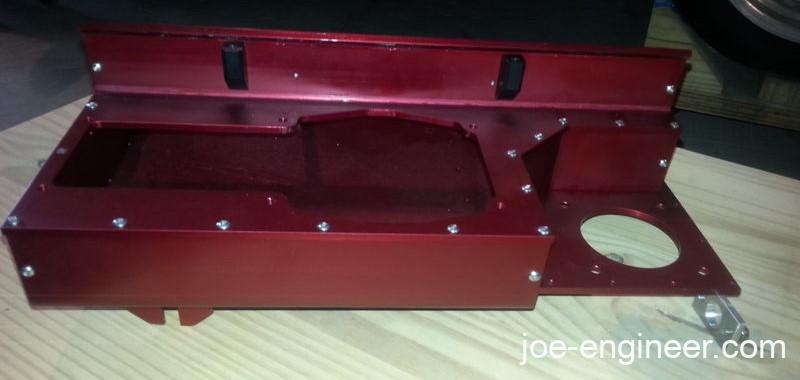
Photo: Pelican Parts Forums 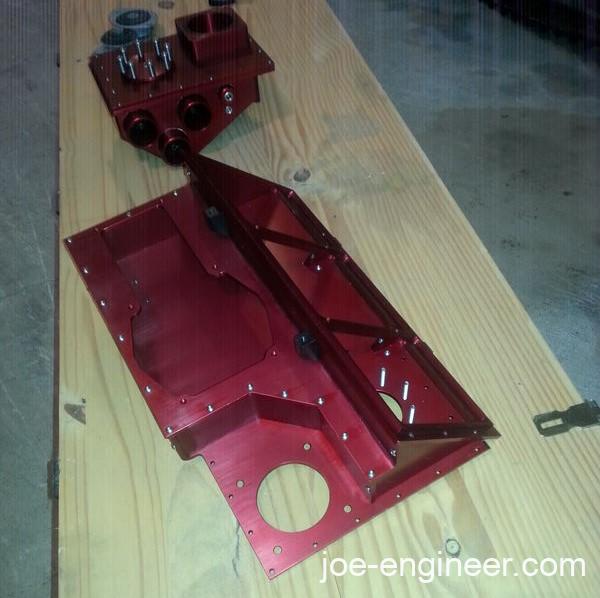
Photo: Pelican Parts Forums
Because CIS ran from 1973-1983 on normally-aspirated 911s, there was at one point a sizeable market for these aftermarket airboxes, which mostly dried up soon after the 1984 Motronic EFI 3.2 Carrera came out. They were quite popular in Turbo applications as well. Used metal airboxes still come up for sale occasionally, as a testament to their durability.
My strategy for preventing a blown airbox was to buy one of these metal airboxes and evaluate it for use in my own car.
A second countermeasure in the aftermarket was to incorporate some kind of pressure relief valve so that in the event that there was a backfire, there was a way to vent the pressure instead of simply transferring the backfire pressure wave to the nearest rubber component in the air pathway (like an intake runner boot) and letting something else blow up. Fortunately all the metal airboxes I have seen incorporated their own version of a pressure relief valve. The aftermarket has also produced a plastic pressure relief valve that can be glued into the OE plastic airboxes.
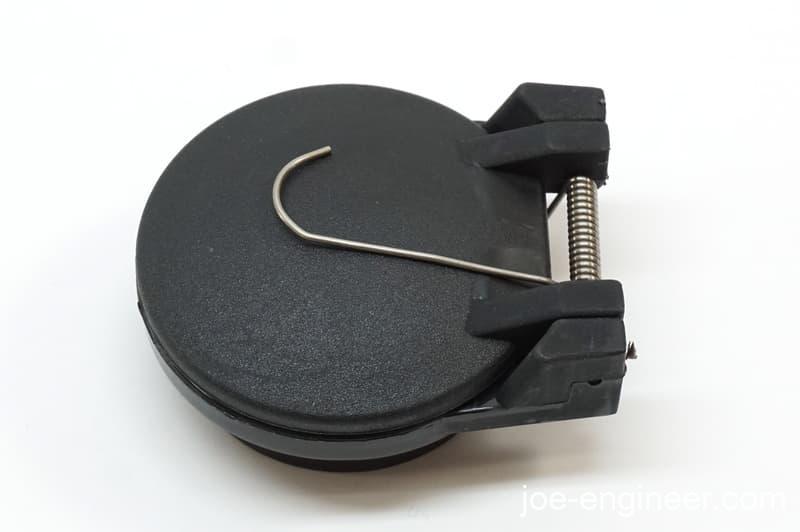
The plastic valves themselves seem to be of decent construction with a rubber o-ring seal but the mounting surface that one is expected to cut into and bond the valve is nowhere near a flat surface.

Since not everyone is an aerospace composites technician, a lack of surface bond prep, the ribbed mounting surface, and poor epoxy adhesion often leads to installed valves that themselves cause vacuum leaks or shoot out of the airbox during the first backfire.
Whichever metal airbox I choose will have to have a serviceable pressure relief valve. It will need to be tested to ensure that it holds vacuum during engine operation and opens up at very low positive pressure.
One thing I wanted to highlight was that the factory never added a pressure relief valve and a lot of people think that they should not be on the car for that reason. The reasoning is “well-tuned CIS cars don’t backfire.” While that may be true, the pressure relief valve’s job is to standby in case of an emergency. To me that is like saying cars don’t need seat belts because “good drivers don’t get into accidents”. There is nothing wrong with backup systems in a vehicle, especially if they can prevent you from getting stranded and allow you to get home safely to troubleshoot another day.
If you were blessed with a new 911 or a well-maintained one, maybe you can forget about the pressure relief valve if you plan to never let the CIS deteriorate. If you are like me and have a neglected car to begin with, maybe the pressure relief valve will keep you from going through multiple airboxes as you figure out how the heck to tune your car properly.
Swallowed Airbox Screws
This one seems rather silly but is actually quite common. I have seen more than a couple engine rebuild threads start with the owner stating that their engine swallowed one of the small screws holding the airbox sections together, that happen to be downstream of the air filter and in the path of intake air going into each cylinder. Over time one of these screws can come loose, and if you are lucky it will just bounce around under the air filter. If you are not so lucky, it will get sucked up into the engine and cost you at the very least a top end rebuild. It would truly be a tragedy if your engine suffered thousands of dollars in damage as a result of a measly screw worth a few cents.
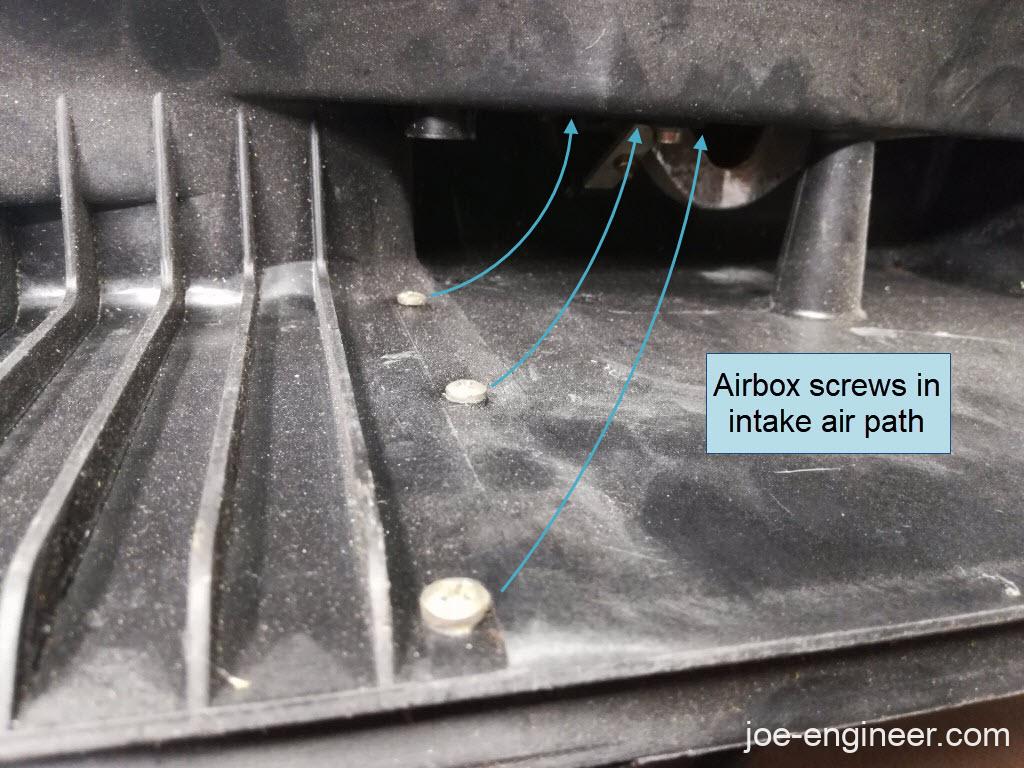
In my mind, the solution is to make sure any hardware that is in the intake path is mechanically locked somehow, either through lock tabs, safety wire, or similar methods (other than thread locker). If the method is good enough for the intermediate shaft gear bolts and oil pump nuts inside the engine case, its good enough for my airbox.
Starting, Running, and Emissions Issues
The troubleshooting for the various starting and running issues is a bit complicated in that a bunch of symptoms might have one single root cause, or the other way around, one seemingly single symptom may actually be a combination of several issues. The troubleshooting matrix and flowchart present in most CIS manuals is enough to let you know that diagnosing issues isn’t as straightforward as other fuel systems.
I personally hate chasing my tail with systems that keep failing because you are only fixing one part at a time while the next weak point breaks soon after, so I typically like to rebuild an entire system and rule out all the weak points in one shot. So my hope is that since this is a electro-mechanical system with numerous interdependent components, if I bench test all the subcomponents to verify they are still useable and renew all the gaskets, seals, and rubber components, I should have a system that will respond correctly to proper tuning. If I slap all the old parts back together without testing anything, Im going to drive myself insane chasing problems on a regular basis.
Lastly, if I want the lambda system to do its job properly, the rest of the system needs to be in top condition as well. So in summary, if I want success from the start, I need to rebuild the entire system.
Before deep-diving into airbox engineering, next time Ill discuss the resources for Porsche 911 CIS diagnostic and tuning information that I used.
References:
Tim Irwin – Pelican Parts Forums, CIS Troubleshooting for Dummies